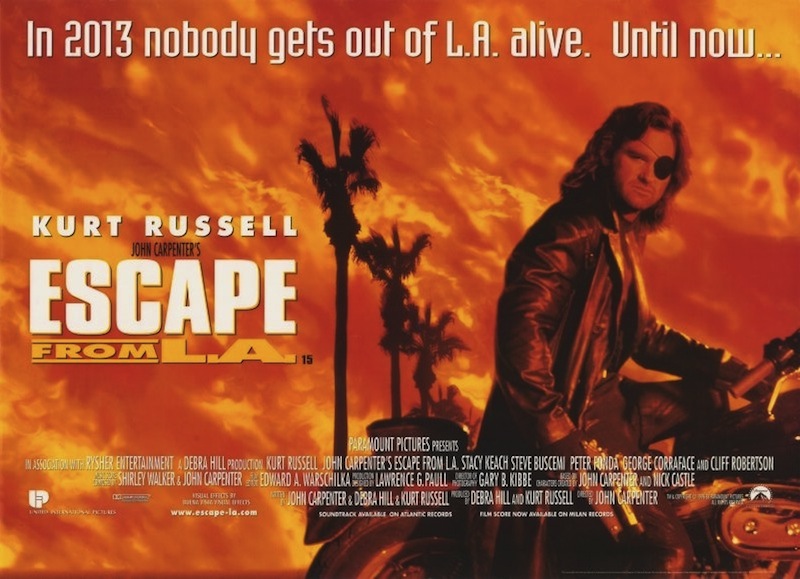Fantasia 2018, Day 20, Part 1: Mandy
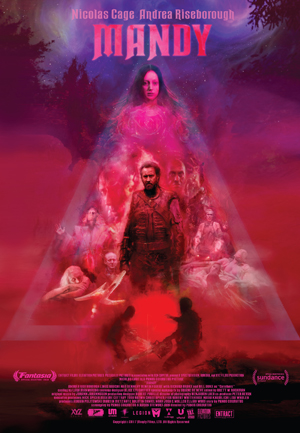 I was at the J.A. De Sève Theatre early on Tuesday, July 31, for a press screening of Mandy. It’s the second film by Panos Cosmatos (director of Beyond the Black Rainbow), who also wrote the script with Aaron Stewart-Ahn. The movie stars Nicolas Cage as Red Miller, a lumberjack who lives in a cottage in the deep woods of the Shadow Mountains with his wife Mandy (Andrea Riseborough), a metalhead artist, in the long-ago year of 1983. Mandy unwittingly catches the eye of a cult leader (Linus Roache), whose minions, the Children of the New Dawn, abduct her. Bad things happen. Miller is tortured. And, inevitably, he embarks on a quest for bloody revenge.
I was at the J.A. De Sève Theatre early on Tuesday, July 31, for a press screening of Mandy. It’s the second film by Panos Cosmatos (director of Beyond the Black Rainbow), who also wrote the script with Aaron Stewart-Ahn. The movie stars Nicolas Cage as Red Miller, a lumberjack who lives in a cottage in the deep woods of the Shadow Mountains with his wife Mandy (Andrea Riseborough), a metalhead artist, in the long-ago year of 1983. Mandy unwittingly catches the eye of a cult leader (Linus Roache), whose minions, the Children of the New Dawn, abduct her. Bad things happen. Miller is tortured. And, inevitably, he embarks on a quest for bloody revenge.
There are films that experiment with the artform of cinema, using sound and visuals in unconventional ways to inspire in the audience strange emotions or new states of mind. And there are grindhouse movies that use revenge plots, violence, buckets of fake blood, power fantasies, maybe a bit of sex, and whatever else comes to hand to entertain the hindbrain of the audience. And then there’s this movie, which does both at once. Mandy is both for the arthouse and the grindhouse, and the match is perfectly harmonious.
This might make it sound like a Quentin Tarantino project, and I suppose there are some points of resemblance; like a Tarantino film, it starts with an exploitation-movie plot. But rather than play with structure or dialogue it uses things like weird lighting effects, sound design, and hypnotic pacing to almost slip past the conscious mind of the viewer. It’s surreal in a way Tarantino never approaches. It’s much more Lynchian, in the way it’s not afraid to slow down to a doped-up pace and in the way it pays attention to soundscapes and in the way it’s not afraid to show a character reacting to something in an almost uncomfortably long take. (There’s even a backdrop near the end that seems to have been borrowed from a certain eccentric psychiatrist in the town of Twin Peaks.)
The aesthetic here is utterly bizarre, shaped by early heavy metal and 80s horror and fantasy paperbacks (from which Mandy reads aloud). Lurid light fills the sky, even at night. Long synthesizer notes and slow doom metal fill the soundtrack, a perfect match to the madness onscreen. Nature photography turns the forests and mountains into suburbs of hell. Animated sequences provide further sci-fi visions. The movie’s nominally set in the real world, but doesn’t feel like it. And then there’s Nicolas Cage.
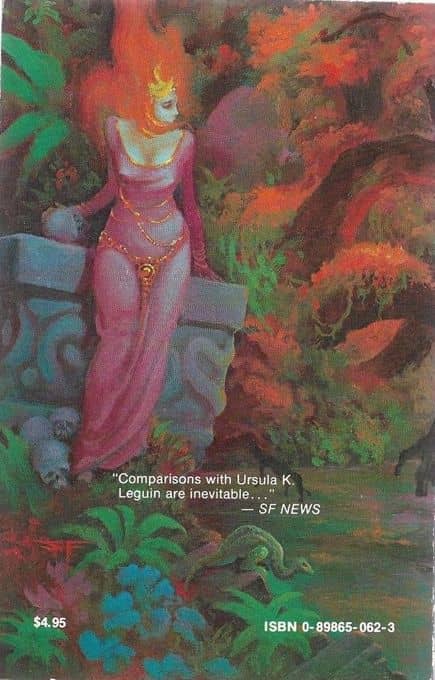
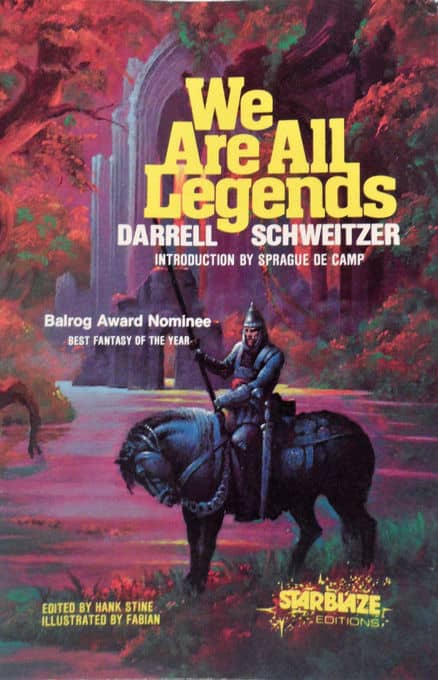
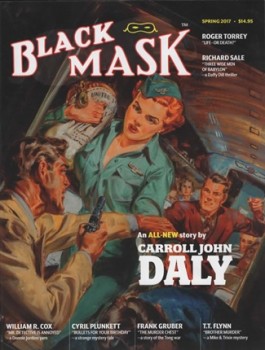
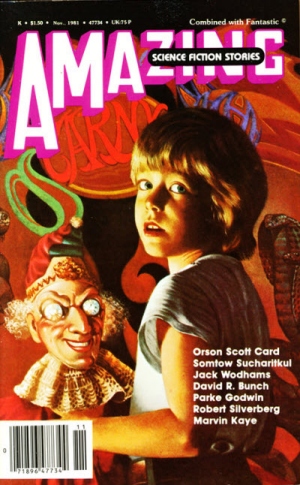
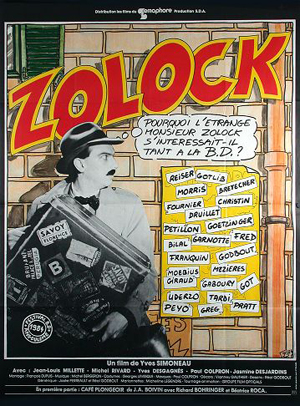 The
The 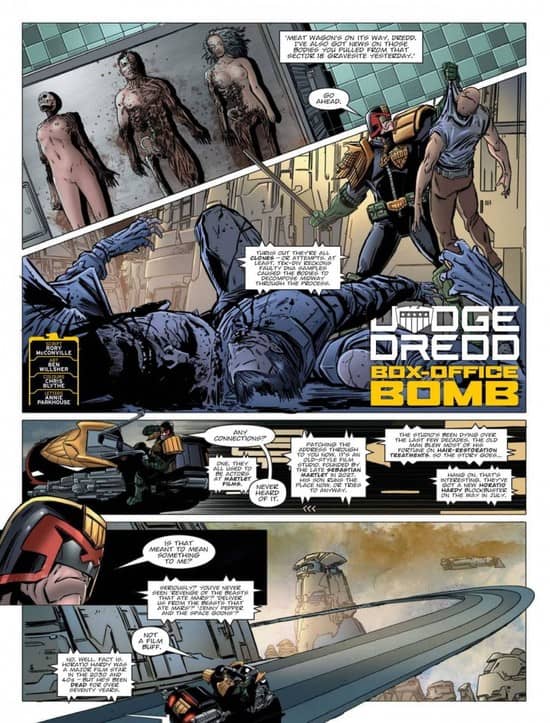
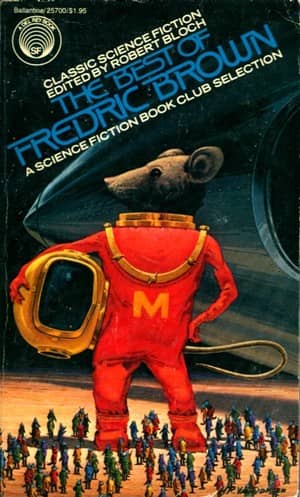
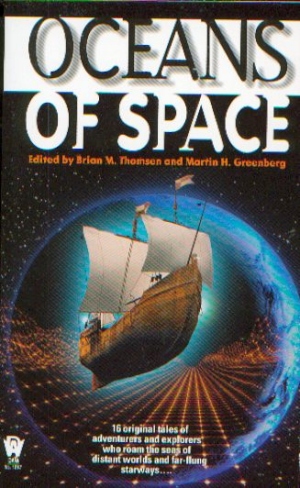
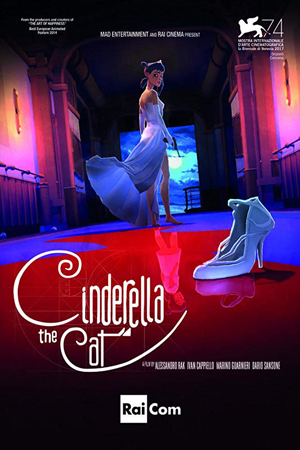 I had three films on my schedule for Monday, July 30. First, an animated science-fictional retelling of Cinderella for adults, called Cinderella the Cat. Then I’d hurry from the J.A. De Sève Theatre to the Centre Cinéma Impérial, where Fantasia was presenting a documentary from the early 80s about bandes dessinées: Pourquoi l’étrange Monsieur Zolock s’intéressait-il tant à la bande dessinée? Then I’d run back to the Hall Theatre for a presentation of Sion Sono’s Tokyo Vampire Hotel, a kinetic horror-action film with campy apocalyptic overtones. Even for Fantasia, it was going to be a strange day.
I had three films on my schedule for Monday, July 30. First, an animated science-fictional retelling of Cinderella for adults, called Cinderella the Cat. Then I’d hurry from the J.A. De Sève Theatre to the Centre Cinéma Impérial, where Fantasia was presenting a documentary from the early 80s about bandes dessinées: Pourquoi l’étrange Monsieur Zolock s’intéressait-il tant à la bande dessinée? Then I’d run back to the Hall Theatre for a presentation of Sion Sono’s Tokyo Vampire Hotel, a kinetic horror-action film with campy apocalyptic overtones. Even for Fantasia, it was going to be a strange day.